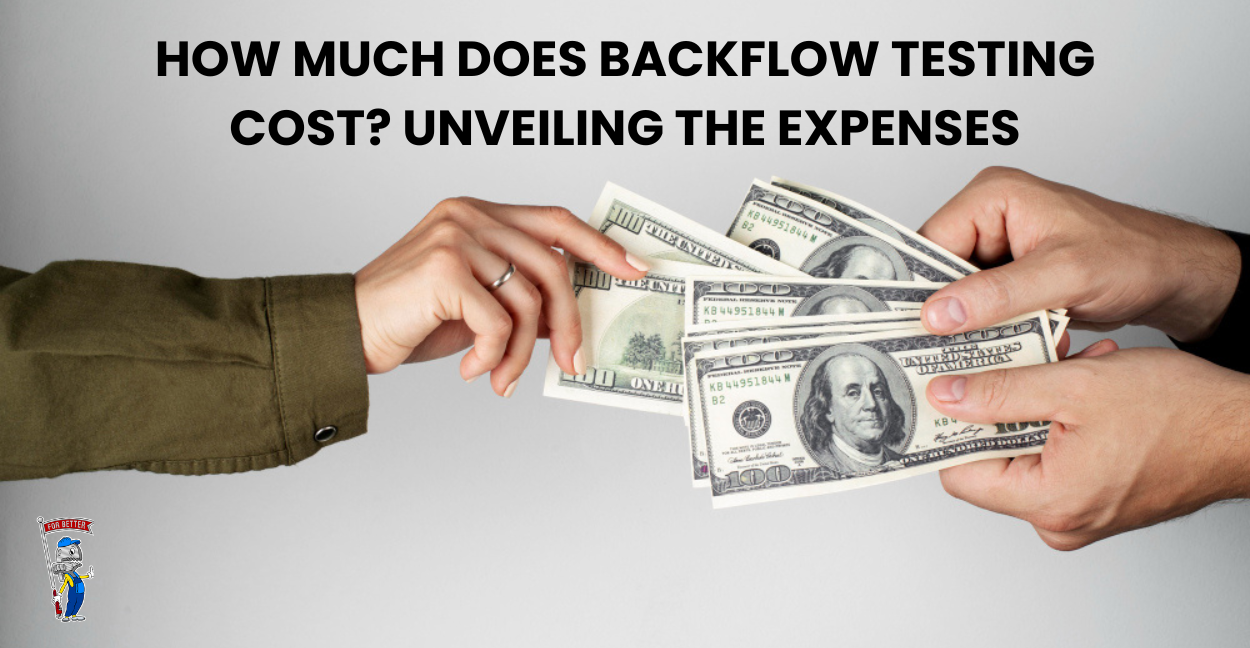Backflow testing is a critical aspect of maintaining the safety and integrity of your water supply system. It ensures that drinking water remains free from contamination by preventing the reverse flow of unwanted substances into the clean water supply. However, determining the cost of backflow testing can be complex, as it depends on various factors. In this article, we’ll delve into the factors influencing backflow testing costs, pricing structures, and essential considerations to help you budget effectively for this essential service.
Factors Influencing Backflow Testing Costs
Several factors can impact the cost of backflow testing, including:
- Location: Costs may vary based on geographical location, local regulations, and market demand.
- Type of Device: The complexity and type of backflow prevention device installed will influence testing requirements and associated costs.
- Accessibility: The accessibility of the backflow prevention device can affect the time and effort required for testing, potentially impacting costs.
- Number of Devices: If you have multiple backflow prevention devices on your property, testing each device will incur additional costs.
- Testing Requirements: Some regions have specific testing requirements mandated by local authorities or regulatory bodies, which can affect pricing.
Understanding Pricing Structures
Backflow testing services are typically priced based on:
- Flat Fees: Some providers may offer flat-rate pricing for standard backflow testing services, regardless of the type or number of devices.
- Per Device Pricing: Others may charge a separate fee for each backflow prevention device tested.
- Additional Services: Additional services such as repairs, maintenance, or administrative fees may be included in the overall pricing structure.
Average Costs of Backflow Testing
While costs can vary significantly depending on the factors mentioned above, the average range for backflow testing is typically between $50 to $200 per device. However, prices may be higher in areas with stringent testing requirements or higher service demand.
Also Read: “Unlocking Water Safety: The What, Why, and How of Backflow Testing”
Essential Considerations
When budgeting for backflow testing, consider the following:
- Regulatory Compliance: Ensure that your backflow testing provider is certified and compliant with local regulations to avoid fines or penalties.
- Quality of Service: Choose a reputable provider with experience in backflow testing and a track record of reliability and professionalism.
- Frequency of Testing: Determine the required testing frequency based on local regulations and the recommendations of your water utility provider.
- Long-Term Savings: Investing in regular backflow testing can prevent costly repairs, water contamination incidents, and regulatory fines in the long run.
Backflow testing is a crucial aspect of maintaining the safety and integrity of your water supply system. By understanding the factors influencing costs, pricing structures, and essential considerations, you can budget effectively for this essential service and ensure compliance with regulatory requirements. For further guidance or assistance with backflow testing, consult with certified professionals in your area to ensure the safety and reliability of your water supply system.
By providing this detailed guide, we aim to assist property owners in understanding the cost factors associated with backflow testing and making informed decisions about budgeting for this essential service. If you have any questions or require further information, please feel free to reach out to us.
Backflow Testing Cost Breakdown: Understanding What Goes Into the Overall Cost of Testing
Equipment and Supplies
Backflow testing requires specialized equipment and supplies to accurately assess the functionality of backflow prevention devices. These include:
- Test Kits: Specialized kits containing gauges, hoses, and adapters are necessary for conducting pressure tests and verifying device performance.
- Calibration Equipment: Regular calibration of testing equipment is essential to ensure accurate results and maintain compliance with regulatory standards.
- Safety Gear: Personal protective equipment such as gloves, goggles, and protective clothing may be required to ensure the safety of technicians during testing procedures.
Labor Costs
Labor costs represent a significant portion of the overall backflow testing expense. Factors influencing labor costs include:
- Technician Experience: Highly trained and certified technicians may command higher hourly rates due to their expertise and qualifications.
- Testing Complexity: The complexity of the backflow prevention device and the testing process can impact the time required for testing, thus influencing labor costs.
- Additional Services: Technicians may provide additional services such as device repairs, maintenance, or administrative tasks, which can contribute to overall labor costs.
Regulatory Compliance
Compliance with regulatory requirements is a critical aspect of backflow testing and can influence costs in the following ways:
- Certification and Training: Technicians must undergo specialized training and certification to perform backflow testing, which may involve upfront costs for education and accreditation.
- Administrative Fees: Some regulatory bodies or municipalities may impose administrative fees for processing permits, certifications, or documentation related to backflow testing.
Travel and Transportation
Travel and transportation expenses are often overlooked but can significantly impact the overall cost of backflow testing:
- Distance: Technicians may need to travel long distances to reach client sites, resulting in higher fuel costs and travel time expenses.
- Vehicle Maintenance: Regular maintenance and upkeep of service vehicles are necessary to ensure timely and reliable transportation to testing locations.
Additional Services and Fees
In addition to the core testing procedure, backflow testing may entail additional services and fees, including:
- Repairs: If deficiencies or failures are detected during testing, technicians may offer repair services to rectify issues and ensure device compliance.
- Maintenance Contracts: Some providers offer maintenance contracts that include regular testing, inspections, and servicing for a fixed annual fee.
Understanding the Economics of Backflow Testing
In the realm of plumbing maintenance, backflow testing stands out as a crucial process to ensure water safety and regulatory compliance. However, understanding the economic implications of backflow testing is equally essential for both businesses and homeowners alike.
1.) Cost Analysis of Backflow Testing:
The cost of backflow testing varies depending on several factors such as the size of the property, the number of devices requiring testing, and local regulations. Typically, the cost ranges from $50 to $200 per device, with additional expenses for any necessary repairs or maintenance. While this initial investment may seem daunting, it pales in comparison to the potential costs of non-compliance fines or health-related issues resulting from contaminated water.
2.) Return on Investment (ROI):
Despite the upfront costs, investing in regular backflow testing yields significant long-term benefits. By ensuring the integrity of your plumbing system and preventing backflow incidents, you safeguard the health and well-being of occupants while avoiding costly penalties. Moreover, proactive maintenance can extend the lifespan of your plumbing infrastructure, reducing the need for expensive repairs or replacements down the line.
3.) Regulatory Compliance:
In many jurisdictions, compliance with backflow prevention regulations is mandatory for commercial properties, healthcare facilities, and multi-family dwellings. Failure to adhere to these regulations can result in substantial fines and legal consequences. By prioritizing regular backflow testing and maintenance, property owners not only fulfill their legal obligations but also mitigate the risk of costly penalties and reputational damage.
4.) Insurance Considerations:
Some insurance providers offer discounts or incentives for properties that undergo regular backflow testing and maintenance. By demonstrating a commitment to water safety and risk mitigation, property owners may qualify for reduced insurance premiums, ultimately resulting in long-term cost savings.
5.) Public Health and Safety:
Beyond the economic considerations, backflow testing plays a vital role in safeguarding public health and safety. Contaminated water poses significant health risks, ranging from gastrointestinal illnesses to more severe diseases. By investing in backflow prevention measures, property owners contribute to a safer and healthier environment for occupants and the surrounding community.
Are you in need of reliable backflow testing services at competitive rates? Look no further. Our expert team specializes in thorough and efficient backflow testing, ensuring the safety and compliance of your water supply.
Schedule an appointment with us today and let our certified technicians handle all your backflow testing needs. With years of experience in the industry, we have the expertise to identify potential issues and provide swift solutions to keep your water system running smoothly.
But our services don’t stop at testing. As your trusted water management partner, we offer comprehensive maintenance and repair services to address any issues that may arise. Plus, with our commitment to customer satisfaction, you can trust that you’re getting top-notch service every time.



